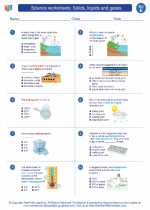Biomes
A biome is a large geographical area of distinctive plant and animal groups, which are adapted to that particular environment. Biomes are often defined by factors such as climate, vegetation, and geography. There are several major types of biomes, each with its own unique characteristics and species.
Major Types of Biomes
- Desert: characterized by low precipitation, high temperatures, and sparse vegetation such as cacti and shrubs.
- Grassland: dominated by grasses, with few trees and a mix of diverse herbivores and predators.
- Forest: can be further categorized into tropical, temperate, and boreal forests, each with its own unique mix of tree species and wildlife.
- Tundra: characterized by low temperatures, short growing seasons, and permafrost, with limited vegetation and wildlife.
- Aquatic: includes freshwater (such as lakes and rivers) and marine (such as oceans and coral reefs) biomes, each with their own unique aquatic plant and animal life.
Factors Affecting Biomes
Several factors influence the characteristics of biomes:
- Climate: including temperature, precipitation, and humidity.
- Topography: such as altitude and slope of the land.
- Soil: the type and quality of soil present in the biome.
- Human Impact: human activities can significantly alter and impact biomes, leading to habitat destruction and species loss.
Study Guide
To study biomes effectively, consider the following key points:
- Understand the characteristics and specific plant and animal life of each major biome type.
- Learn how climate, topography, and soil influence the development of different biomes.
- Explore the impact of human activity on biomes and efforts to conserve and protect these ecosystems.
- Study examples of specific biomes around the world and their unique features.
- Consider the interconnectedness of biomes and the impact of changes in one biome on others.
By understanding the diverse biomes on Earth, we can appreciate the incredible variety of life and environments that exist, and work towards their preservation and sustainable management.
[Biomes] Related Worksheets and Study Guides:
.◂Science Worksheets and Study Guides Fifth Grade. Science worksheets: Solids, liquids and gases.
Study Guide Solids, liquids and gases
Solids, liquids and gases  Worksheet/Answer key
Worksheet/Answer key Solids, liquids and gases
Solids, liquids and gases  Worksheet/Answer key
Worksheet/Answer key Solids, liquids and gases
Solids, liquids and gases  Worksheet/Answer key
Worksheet/Answer key Solids, liquids and gases
Solids, liquids and gases  Vocabulary/Answer key
Vocabulary/Answer key Solids, liquids and gases
Solids, liquids and gases 

 Worksheet/Answer key
Worksheet/Answer key
 Worksheet/Answer key
Worksheet/Answer key
 Worksheet/Answer key
Worksheet/Answer key
 Vocabulary/Answer key
Vocabulary/Answer key

The resources above cover the following skills:
PHYSICAL SCIENCE (NGSS)
Matter and Its Interactions
Students who demonstrate understanding can:
Make observations and measurements to identify materials based on their properties.